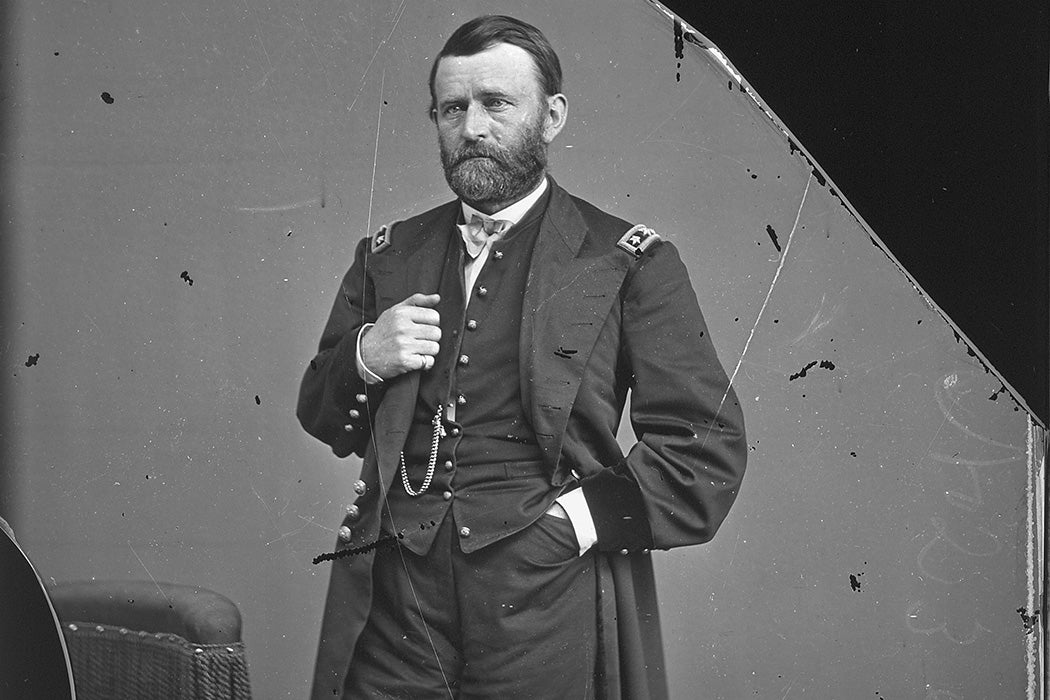President Andrew Johnson barely escaped being convicted by the Senate during his impeachment trial of 1868. The Tennessean had been selected as Abraham Lincoln’s running mate in 1864 in a gesture of unity between North and South, with an eye toward reconciliation after the war. But Johnson was unsuited to the tasks of Reconstruction, particularly leading the Republic in accepting formerly enslaved people into public life. He left office and eventually faded from public view.
The country, wracked by divisions, looked for a unifying savior, and in 1868 overwhelmingly elected Ulysses S. Grant, the Civil War general and the most prominent American of his time. Grant’s presidency is often overlooked, but his accomplishments around civil rights are getting more consideration from historians.
According to the Journal of Blacks in Higher Education, African Americans looked on Grant with favor: “Lincoln issued the Emancipation Proclamation, but it was Grant who actually freed the slaves.”
What’s the evidence for this? First, there was Grant’s record on the battlefield. While other Union generals dithered, Grant took aggressive action against the rebellious states of the Confederacy. African Americans credited his leadership with the liberation of huge slices of the South as his Union Army pressed from the west.
Second, Grant also backed enlisting formerly enslaved people to the cause before many others did, and supported the Fifteenth Amendment, which provided suffrage for African American men. And as president, in 1871 Grant created the U.S. Department of Justice to enforce basic rights for African Americans, then under siege by Ku Klux Klan terrorism.
In 1875, Grant signed the landmark Civil Rights Act, ending separation in public accommodations and more. (This legislation was later overturned by the U.S. Supreme Court.) He also signed the Enforcement Acts, which protected the voting rights of Blacks in the old Confederacy, a central initiative of Reconstruction.
“Grant oversaw a social revolution that was unprecedented,” notes scholar Joann Waugh, as, for a fleeting moment, Blacks in the South exercised political power and seemed on the cusp of transforming an entrenched racist culture.
Yet it was not to last. And much of that, note some Reconstruction scholars, was the reluctance of Grant to fully exercise federal authority to enforce the civil rights of African Americans. Had he more strongly asserted his own views on civil rights, a new South might well have emerged. By the end of his second term, the North had exhausted its interest in Reconstruction, and the oppression of African Americans asserted itself once again.
Grant, as general of the Union Army, himself offered generous terms to the vanquished foes, opposing proposals to indict the Confederacy’s leadership for treason. He was, as president, reluctant to press too hard on his former military enemy.
Weekly Newsletter
Grant left office at the end of his two terms in 1877. His administration was plagued by corruption, although Grant himself has largely been seen as not personally involved with the crimes of his underlings. Always a bad businessman, Grant invested in speculative ventures that toward the end of his life rendered him nearly penniless, until he wrote a best-selling memoir.
He died in New York in 1885 at the age of sixty-three. Over a million people lined the street for his funeral procession. Grant’s Tomb, now a quiet refuge on the Upper West Side of Manhattan, was the most popular tourist attraction in New York City for more than forty years, a testament to the impact the eighteenth president retained in nineteenth-century life.







